Understanding, Seeing and Tasting the History of the Southern Part of Gujo
A Luxurious Driving Route
To sense the history of Gujo
If you want to feel the history of Gujo, we recommend you take a drive in the early summer! You can have a luxurious lunch, go to hot spring and buy Gujo’s souvenir! It is a driving route going to 10 places in one day!
 10 min.
10 min.
 30 min.
30 min.
 3 min.
3 min.
 10 min.
10 min.
 30 min.
30 min.
 1 min.
1 min.
 5 min.
5 min.
 30 min.
30 min.
 10 min.
10 min.
Meiho History & Folk Museum
Understanding the life and knowledge of the predecessors in this nostalgic wooden building
This museum was reconstructed from a closed wooden school (Former Meiho Elementary School). 47000 items of old tools, books, toys and dolls are displayed in this museum. Charcoal making, sericulture, snow control measure, food and clothes are designated as Important Tangible Cultural Properties. You can see how the ancient people lived in this region. There is local tour guide introducing all the displays. Some scenes of drama “Mittsu-no-tsuki” was shot in the hall on the east side of the building. You can find the white windows in the drama.

This museum was reconstructed from an old wooden elementary school which was built in 1937.

You can touch and pick up almost all displays.
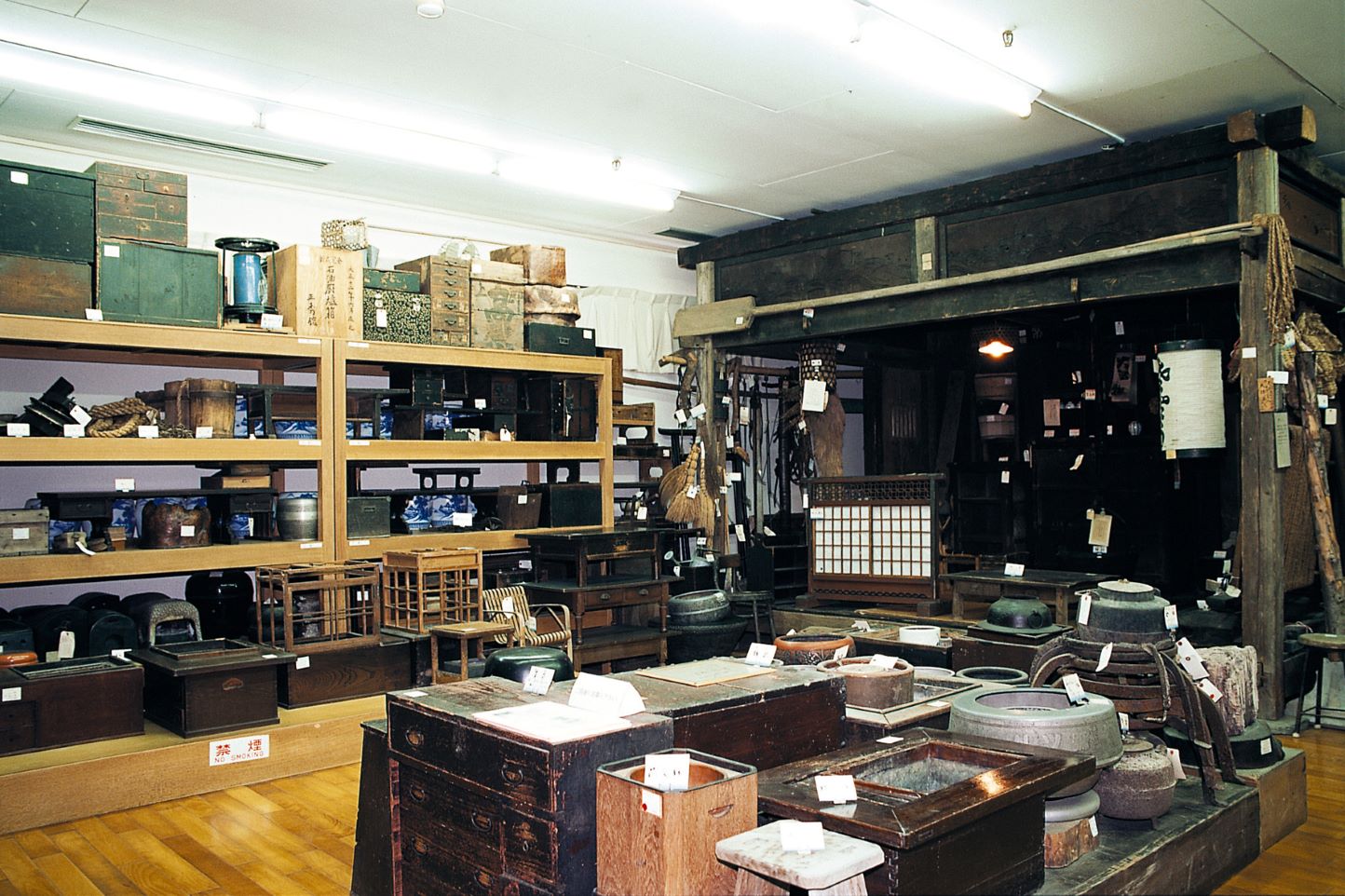
There are many Important Tangible Cultural Properties displayed inside the museum!
Roadside Station Meiho (Surusumi-no-sato Park)
All local specilties can be found here! The best shopping area along Seseragi Kaido.
“Seseragi Kaido” linking Gujo Hachiman and Hida Takayama is a famous driving route. Roadside Station Meiho is located along this route. A statue of the famous horse “Surusumi” is a symbol in the middle of the parking area. The mountains show different kinds of beauty in different seasons. It is one of the best spots to see this scenery. Local specialties and fresh vegetables are available at the morning market. Among all these specialties, Meiho Ham is our most recommended item! There are also restaurants providing local cuisine, like salt grilled fish.

One of the most famous products of Gujo, Meiho Ham, is popular all over the country.

There is a large parking area. If you are tired when you are walking around the historical spots, you can take a rest here.

Famous horse “Surusumi” was a present to General Minamoto Yoritomo. Its statue is a symbol here.
Gujo Hachiman Hakurankan (Gujo Hachiman Museum)
Come and enjoy more during your Gujo Hachiman trip!
This museum was a Tax Office built during Taisho era (1912 – 1926). Displays and exhibitions introducing the charming points of this castle town of water and dance, Gujo, are available inside the museum. You can know more about the history and culture of Gujo after visiting this museum. There is demonstration of Gujo Odori Dance throughout the year. Staff wearing Yukata (Casual & informal cotton kimono) explains the meanings of all 10 types of dances and shows us how to dance. You can practice dancing together too.

This nostalgic building was a Tax Office built during Taisho era.

Important Intangible Cultural Properties, like Gujo Indigo Dye and fishing tool Gujo Biku (Basket for carrying fish) were displayed.
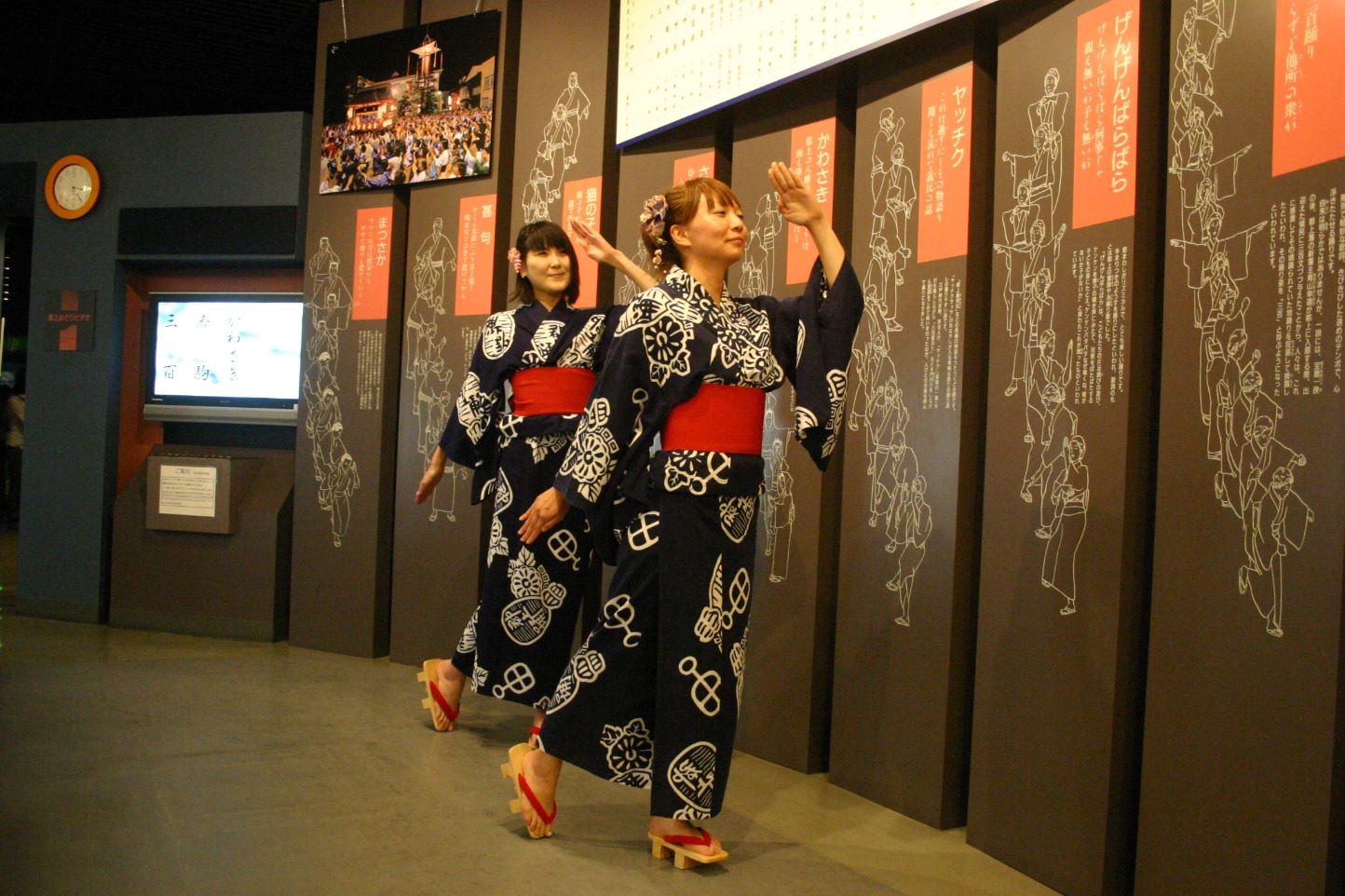
You can learn how to dance Gujo Odori Dance here and know more about the traditional culture of this region.
Lunch at Yoshidaya Minokin
The best eel cuisine you can find in Gujo
After knowing the history of Gujo, we recommend you try eel cuisine at an old restaurant, Yoshidaya Minokin, in the castle town. You can try eel and Ayu (Sweetfish) cuisine made with the clear water in Gujo. They use well water to keep the eels. As eels do not have scale, they are affected so much by the quality of water. Cool and clear water of Gujo can make better quality of eels. Japanese eels taste better and softer. The owner of the restaurant only uses local ingredients from Hida, Mino and Mikawa that makes the dishes taste more delicious.

Using the same seasonings when this restaurant established. The taste of eels is so good!
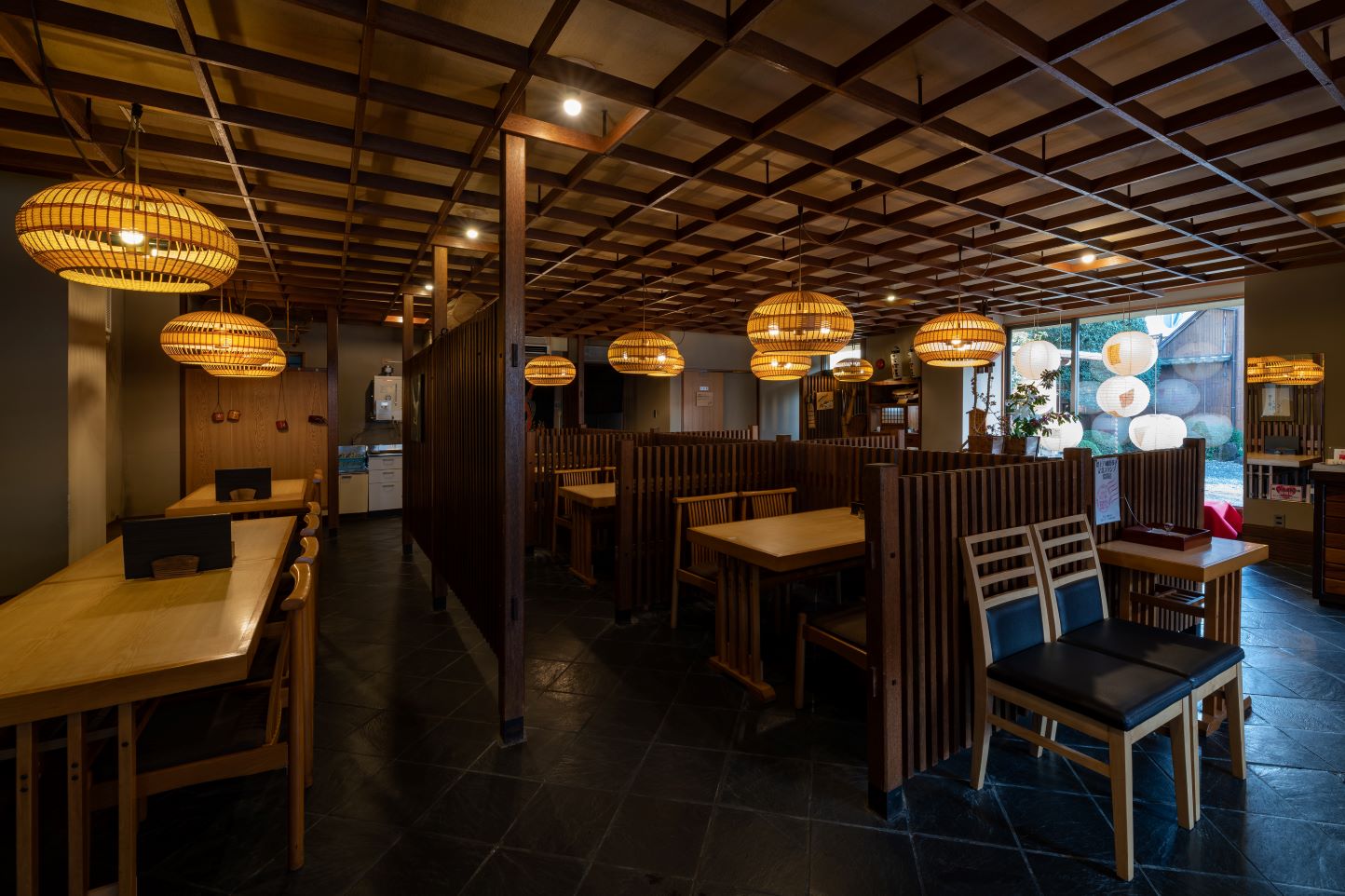
You can try Ayu and eel cuisine in this restaurant with calm and soft atmosphere.

It is located at the center of Gujo Hachiman. This location is the best for historical tour.
Gujo Hachiman Castle
The oldest rebuilt wooden castle in Japan. Seeing the castle town from this beautiful mountain castle.
The symbol of Gujo Hachiman, “Gujo Hachiman Castle”, is also called Sekisui-jo. It is a beautiful mountain castle. This castle was abandoned in 1871 and destroyed in the next year. The castle we see now was rebuilt in 1933. This wooden 5-storied castle is an Important Cutlural Property of Gujo. The stone wall nearby is designated as a historical site. When you see from the castle tower, you can see the castle town is in fish shape!

The contrast of green of tress and white appearance, Gujo Hachiman Castle is a symbol to represent Hachiman area. There are many spots to see, like the stone wall that shows the Age of Civil War and view from the castle tower.

Displays of how the castle was built and the owner of the castle are inside the castle tower.

When you look down from the entrance, you can see the town Gujo Hachiman is in the shape of fish!
Minami Furusato-kan (Enku Furusato-kan, Minami Life Museum)
Home of Enku & Minami Furusato-kan, Timeless Hometown of Mind
After knowing the history of Gujo Hachiman castle town, we recommend you visit the historical spots of monk Enku at Minami area. Enku was born in Gujo-shi Minami-cho in 1632. He travelled throughout the country to spread Buddhism. When he was receiving training, he left many Buddha statues. Many of them were left in Minami-cho. In Minami Furusato-kan, over 90 statues are displayed according to their ages. You can see how their faces changes. You can know more about his life in this Life Museum too.

You can learn the history if Enku and Minami-cho at Minami Furusato-kan.

Many displays are available in the museum. You can see what Enku did in the past.

Spring water from Kayukawa River can be found at the parking area of Minami Furusato-kan.
Hoshinomiya-jinja Shrine
One of the 6 Kouka-jinja shrines enshrining the God of eye trouble
Hoshinomiya-jinja Shrine is located next to Minami Furusato-kan. It is one of the 6 Kouka-jinja shrines surrounded by Mt Kouka. Benefits of worshiping at this shrine include improving asthma and eye troubles. Although Shintoism and Buddhism were separated during Meiji era, Buddha statues are still remaining in this shrine. Kayukawa-ji Temple was one of temples that Enku has been to. He learnt Buddhist scriptures and penmanship at this temple in the past.

Cedar trees are surrounding the whole area. You can feel the history of the shrine.

Ema (Votive picture) with sickle on the left was dedicated.

You can see the Torii (Gateway at the entrance to a Shinto shrine) with the background of a forest. It is located near to Minami Furusato-kan.
Yatogabuchi
A mysterious place from the Heian era
Yatogabuchi is located 100m up stream of Hoshinomiya-jinja Shrine. It is surrounded by a huge cedar tree with over 100 years old. During the Heian era (794 – 1185), Fujiwara-no Takamitsu was sent to chase the demons away. Eels in this Kayukawa River guided him when he was lost. Arrow which killed the demon dropped into the deep pool. After that, people started calling this pool Yatogabuchi. When the weather is good and the Sun is right above the pool, sunlight goes through the trees and reaches the surface of the pool. It reflects a beautiful emerald green makes it looks even more mysterious. You can feel the legends and history in this area.

The contrast of green plants, white waterfall and blue water makes it more mysterious.

The water of Yatogabuchi is very clear, like the blue water you see in paintings.

The air is fresh and clear, making a holy atmosphere.
Roadside Station Minami
Take a rest and buy some souvenirs
Roadside Station Minami is located along the National Route 156 near to Nagaragawa River. You can feel the nature here. There are shops selling local specialties and homemade lunch boxes. Also, local fresh vegetables, handcrafts and flowers can be found in the morning market. You can find all you need here. If you come here, we recommend you try soft ice cream using local mulukhiya and blue berry. You can taste the flavor of mulukhiya and feel the fresh sourness of blue berry in this time limited ice cream.

This rich soft ice cream of mulukhiya is very popular.

It is located at a good location that visitors can feel the nature of Nagaragawa River.

At the morning market, fresh local vegetables, flowers and seedlings are also for sale.
Nihonmanmannaka-onsen Kodakaranoyu
A rare hot spring inside a railway station!
Our last destination of this historical trip is hot spring! This hot spring is located around 10 minutes ride from Roadside Station Minami. When you get off from Nagaragawa Railway, you can see the entrance of the hot spring. It is rare that a hot spring is located inside a train station. The open-aired bath is large and spacious. There are also wooden bath with boog smell, steam bath and sauna room available. After taking a hot bath, you can take a rest at the rest corner or have some food at Restaurant Koyasu. Udon noodles, Soba noodles and rice bowls are provided.

The name Kodakaraonsen comes from Koyasu-jinja Shrinewhere people worship to have babies and easy delivery.
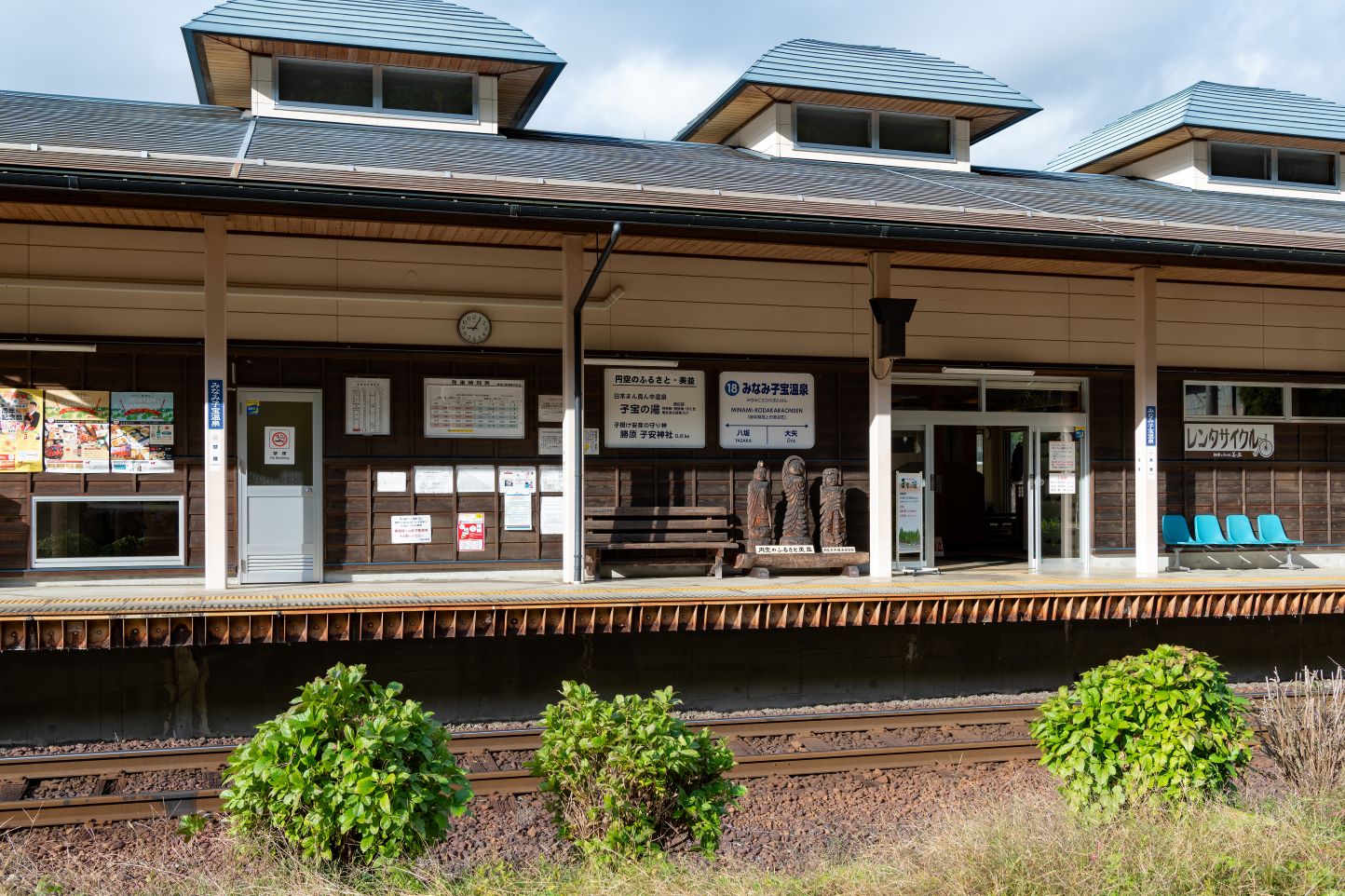
Getting off Minami-kodakaraonsen Station of Nagaragawa Railway, you can find the entrance of the hot spring.
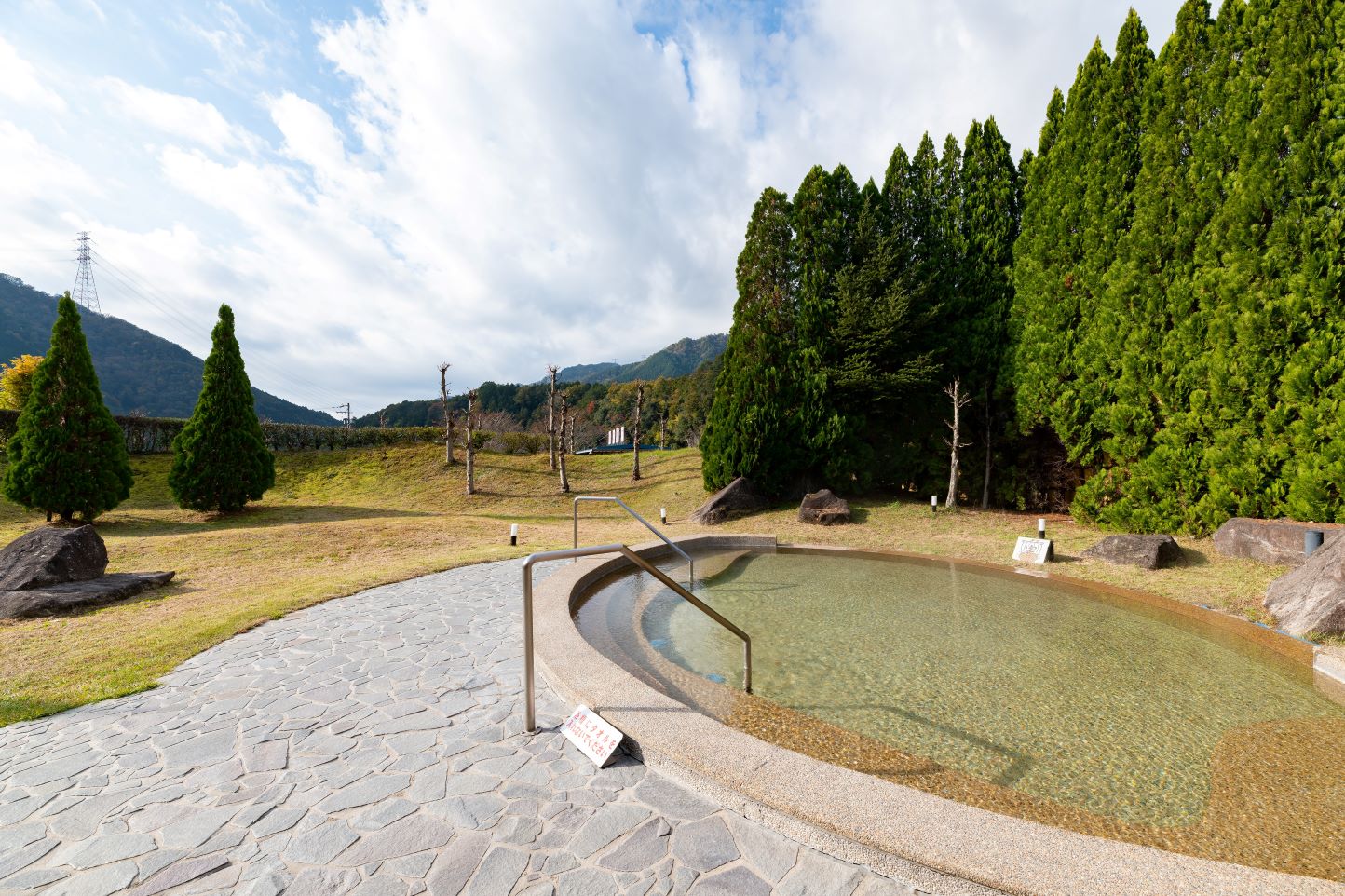
Trying an open-aired alkalescence bath is so relaxing!





